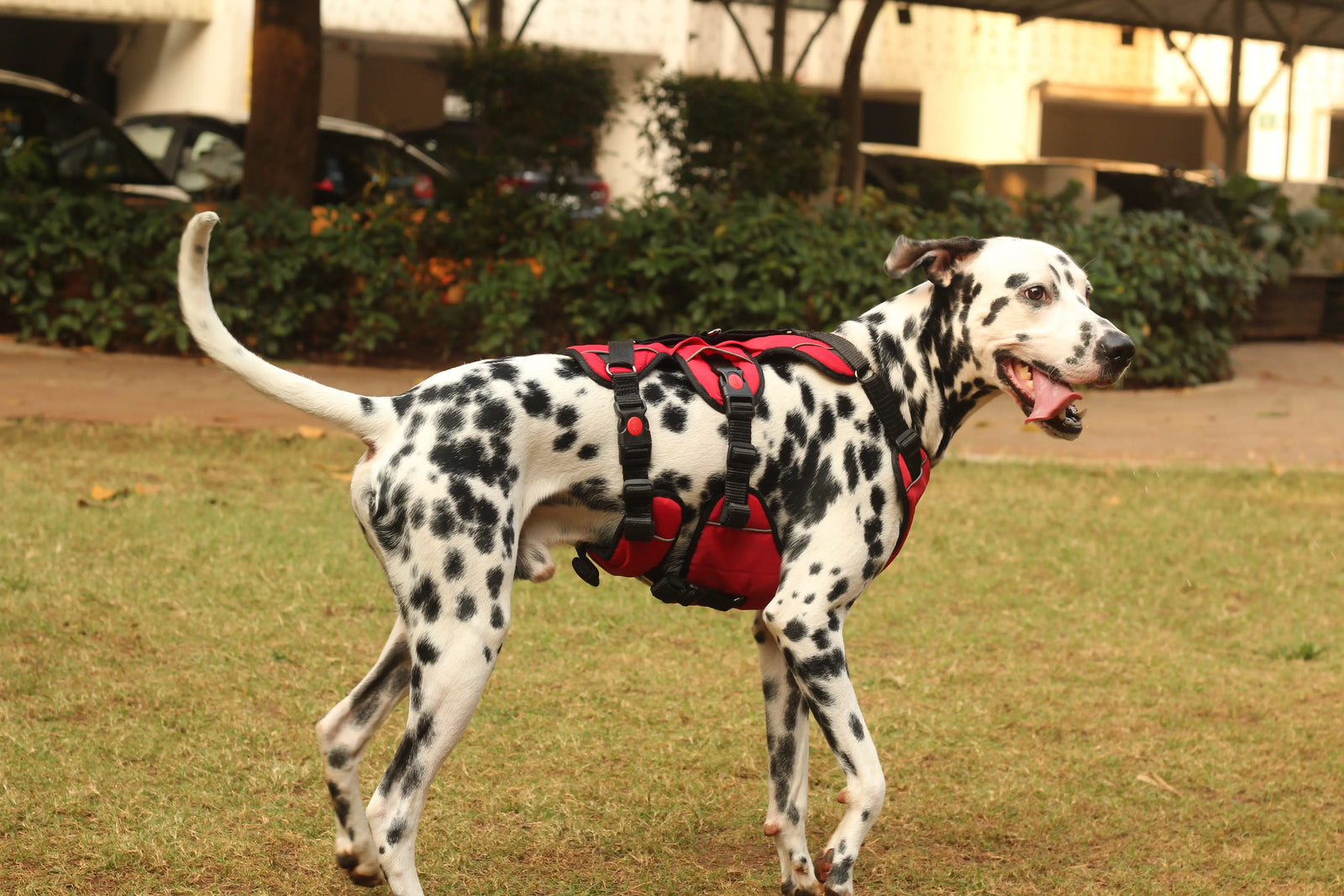How did I prevent my anxious dog from escaping the harness?

Hey there, fellow pet parents! Picture this: you're strolling along with your pup, enjoying a nice walk on a beautiful day. Suddenly, out of nowhere, your pup panics; slips out of the harness and leaves you feeling frustrated. If you've experienced this heart-stopping moment, you're not alone. But fear not! In this guide, I'll share tips and tricks I've picked up myself to prevent your pup from slipping out of their harness during walks.
Understanding Which Dogs Are Most Likely to Escape
Let's delve into which dogs are most prone to slipping out of their harnesses and why.
The Lanky Escapists: Indies Breeds and Deep-Chested Pups
Let's discuss those cool, super-flexible dogs we often see lounging around like royalty – the beautiful Indies breeds. These include Rajapalayam, Mudhol Hounds, elegant Dobermans, and speedy whippets. These deep-chested pups are pros at slipping out of harnesses, especially when they pull back. My own indie-mix, Zoofy, once slipped out of his harness when he got scared by a loud motorbike.

The Anxiety-Prone Pups: Rescue Dogs
Next up, we have our sensitive souls – the anxious dogs who haven't quite warmed up to the idea of wearing a harness. They might be rescues adapting to a new environment or pups who prefer to feel free and unencumbered.
The Stubborn Escape Artists: Huskies and Beagles
Last but not least, we have our independent thinkers – the huskies, beagles, and other stubborn breeds who march to the beat of their own drum. These clever canines may not be anxious or lanky, but they sure know how to put up a fight when it comes to wearing a harness.
In conclusion, every dog is unique, and their reasons for escaping their harnesses vary. Whether they're lanky, anxious, or plain stubborn, our babies always seem to keep us on our toes.
Now, how do we prevent this?
Ensuring a Perfect Fit: Adjusting the Harness to Your Dog's Body
So, you've got that snazzy new harness for your pup, but the work doesn't stop there. Even if you've snagged the right size, it's crucial to fine-tune the fit to your furry friend's unique physique. Let's dive into some practical methods to ensure your dog's harness fits like a glove:
The Two-Finger Rule: A Handy Measure of Comfort
Ever heard of the two-finger rule? It's a lifesaver for your dog's comfort. Here's how it works: slide two fingers under the harness straps at any point. If it's snug but not squeezing the life out of your fingers, you're in the sweet spot. If it feels like you're trying to force a square peg into a round hole, loosen those straps up a bit.
The Pull Test: Ensuring Escape Isn't on the Agenda
Now, imagine trying to wrangle your pup into the harness, only for them to stage a great escape by slipping right out of it. That's where the pull test comes in. Try to pull the harness over your dog's head gently. If it slides off like butter on a hot pan, it's too loose. But if it clings on like your dog's newfound best friend, you're on the right track.
Watching for Tell tale Signs of Misfit
Sometimes, your dog might be trying to tell you that something's not quite right with their harness. Keep an eye out for signs like the back piece rotating to the side or the chest section loosening during walks. These red flags could mean it's time for some adjustments. Additionally, remember to re-adjust your pup’s harness every 3-6 months due to weight changes or harness wear.
Why does all this fuss over fit matter?
A properly fitted harness isn't about looks. It's about your dog's comfort, distributing weight evenly, and preventing slips and escapes.
In conclusion, fitting a dog harness properly isn't rocket science, but it does need a keen eye and a bit of trial and error.
But, what if your dog still slips out even with a good fit, then maybe the harness isn't right for them. How to pick the right harness for your pup?
Choosing the Right Harness: Assess Your Dog's Needs: Escape Artists, Anxiety, and More
First things first, take a good look at your dog's habits and tendencies. Is your pup a master escape artist or perhaps they're a bit anxious?
When I first adopted Zoofy, he was an anxious dog. Random things would trigger him. Loud motorbikes, men in dhoti, maids! I had to use a martingale collar to keep him safe but I always worried about him choking. That's when I knew I needed an escape-proof harness to keep him secure.
What is an Escape Proof or a No Escape Dog Harness?

For starters, it's equipped with an extra rear belt that wraps around the rib cage, providing an added layer of security. Zoof Escape-proof harness has an extra layer of safety. The harness is ingeniously designed to tighten when your dog tries to wriggle out, yet remains relaxed when they're not pulling.

The quality is non-negotiable. Zoof manufactures harnesses using high-quality materials. They include snap buckles with locks and durable webbing. With Zoof, you can rest easy knowing your dog is in good hands.
Conclusion
Alright, pet parents! Let's wrap it up. Keeping your furry friend safe in their harness is all about understanding their habits and getting the right fit. First, figure out if your dog tends to slip out when they're anxious or if they're a bit of an escape artist.
Then, make sure the harness fits snugly using tricks like the Two-Finger Rule and the Pull Test. If they're still slipping out, it might be time for a better harness fit. Check out Zoof's Escape-Proof Harness for some extra peace of mind on your walks. Your dog's comfort and safety come first, so choose wisely!




Leave a comment